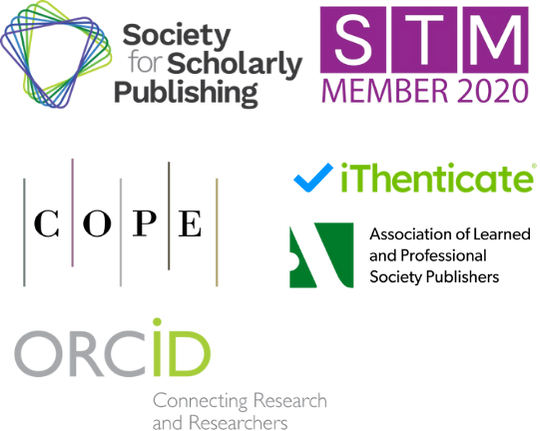Advances in Copper Coordination Polymers and Chemical Stabilizers for Enhanced Urease Inhibition in Agricultural Soils
DOI:
https://doi.org/10.71222/dczs3h58Keywords:
copper-based coordination polymers, urease inhibition, controlled release, chemical stabilizers, nitrogen use efficiency, polymer structure, sustainable agricultureAbstract
Efficient nitrogen management is critical for sustainable agriculture, and urease inhibitors play a vital role in enhancing nitrogen use efficiency by reducing urea hydrolysis losses. Copper-based coordination polymers (Cu-CPs) have recently emerged as promising urease inhibitors due to their unique structural features, controlled copper ion release, and multifunctional inhibitory mechanisms. This review comprehensively discusses the interaction of Cu²⁺ ions with urease active sites, the advantages of Cu-CPs over conventional inhibitors, and the influence of polymer architecture on inhibition kinetics. In particular, the synergistic effects of polymer design and chemical stabilizers in soil environments are highlighted for prolonging inhibitory activity and improving environmental compatibility. Challenges related to material cost, field-scale application, and ecotoxicity are also addressed. Finally, future perspectives emphasize green synthesis approaches, biodegradable ligand design, and smart responsive systems to advance the development of Cu-CP-based urease inhibitors for sustainable agricultural applications.
References
1. W.-L. Duan, et al., "Fabrication of two 5-R-isophthalic acid-modulated Cu-based coordination polymers as urease inhibitors," CrystEngComm, vol. 26, no. 3, pp. 324–333, 2024, doi: 10.1039/D3CE01109G.
2. Y. Zhai, et al., "Employing Copper-Based Nanomaterials to Combat Multi-Drug-Resistant Bacteria," Microorganisms, vol. 13, no. 4, p. 708, 2025, doi: 10.3390/microorganisms13040708.
3. E. Khan, et al., "Medicinal importance, coordination chemistry with selected metals (Cu, Ag, Au) and chemosensing of thiourea derivatives. A review," Crit. Rev. Anal. Chem., vol. 51, no. 8, pp. 812–834, 2021, doi: 10.1080/10408347.2020.1777523.
4. F. Ding, C. Ma, W.-L. Duan, J. Luan, "Second auxiliary ligand induced two copper-based coordination polymers and urease inhibition activity," J. Solid State Chem., vol. 331, p. 124537, 2024, doi: 10.1016/j.jssc.2023.124537.
5. G. Xie, W. Guo, Z. Fang, Z. Duan, X. Lang, D. Liu, G. Mei, Y. Zhai, X. Sun, and X. Lu, "Dual-metal sites drive tandem electro-catalytic CO₂ to C₂⁺ products," Angew. Chem., vol. 136, no. 47, p. e202412568, 2024, doi: 10.1002/ange.202412568.
6. Y. Y. Lim, A. M. A. Zaidi, and A. Miskon, "Combining copper and zinc into a biosensor for anti-chemoresistance and achieving osteosarcoma therapeutic efficacy," Molecules, vol. 28, no. 7, p. 2920, 2023, doi: 10.3390/molecules28072920.
7. F. Ding, N. Su, C. Ma, B. Li, W.-L. Duan, J. Luan, "Fabrication of two novel two-dimensional copper-based coordination pol-ymers regulated by the “V”-shaped second auxiliary ligands as high-efficiency urease inhibitors," Inorg. Chem. Commun., vol. 170, p. 113319, 2024, doi: 10.1016/j.inoche.2024.113319.
8. A. Veysi, M. Roushani, and H. Najafi, "Synthesis and evaluation of CuNi-MOF as a corrosion inhibitor of AISI 304 and 316 stainless steel in 1N HCl solution," Heliyon, vol. 11, no. 1, 2025, doi: 10.1016/j.heliyon.2024.e41296.
9. W.-S. Huang, et al., "Copper affects virulence and diverse phenotypes of uropathogenic Proteus mirabilis," J. Microbiol. Immunol. Infect., vol. 57, no. 3, pp. 385–395, 2024, doi: 10.1016/j.jmii.2024.02.007.
10. Z. Chen, et al., "Smartphone-Assisted Label-Free Bicolor Colorimetric Assay for on-site Detection of 5-Fluorouracil," ACS Appl. Nano Mater., 2025, doi: 10.1021/acsanm.5c02468.
11. F. Ding, C. Y. Hung, J. K. Whalen, L. Wang, Z. Wei, L. Zhang, et al., "Potential of chemical stabilizers to prolong urease inhibition in the soil–plant system," J. Plant Nutr. Soil Sci., vol. 185, no. 3, pp. 384–390, 2022, doi: 10.1002/jpln.202100314.
Downloads
Published
Issue
Section
License
Copyright (c) 2025 Xuan Liu, Yi Xu, Nurul Aisyah Binti Ahmad (Author)

This work is licensed under a Creative Commons Attribution 4.0 International License.


